How to tie a d-loop like a pro
The d-loop is the foundation of a bow’s setup. Tied incorrectly, the d-loop will create countless headaches and inconsistencies down range. Most archers are unaware of the crucial role the d-loop plays in building forgiveness and consistency shot after shot. But, it is one of the fundamental pieces to achieving an accurate and forgiving archery setup. If you are looking for the method on how to tie a d-loop like a Vegas champ and the why behind the method, this guide is for you.
Tools and Supplies
- d-loop pliers/ needle nose pliers: these will allow you to tighten the loop after it is tied
- lighter: needed to melt the material you’ll be working with
- knife/scissors: needed to cut the strings you will be using
- d-loop string (bcy23)
- soft knot string (80lb magibraid dacron fishing line)
Step one: Mark Where you will put the D-loop
If you were to ask a variety of the top pros where the correct d-loop position is, you would be met with a variety of answers. Some would argue that the d-loop should be at the center of the bow, positioned so that the arrow is directly aligned with the berger hole. Others would say that their bows have always tuned better when the arrow sits 1/8″ high. My preferred d-loop position is whatever benefits my pin float the most. For a full guide on how to dampen pin float by adjusting d-loop position click here: https://archeryethos.com/your-d-loop-height-is-off-heres-how-to-fix-it/ . Ultimately it is up to you to decide where you want to position your d-loop. When you decide where you want it, mark that position. Always go with whatever gives you the most confidence.
Step Two: Tie in your Soft Knot(s)
Purpose
The purpose of soft knots is to eliminate nock pinch. The question of whether archers should use one soft knot or two is a hotly debated subject in archery circles. Two soft knots, one above and one below the nock, was my preferred method for a long time. Now a soft knot on each side of the nock does guarantee that no part of the d-loop pressures the nock. However, when two soft knots are present, the bowstring actually does not sit square to the arrow at full draw. This can cause some up and down inconsistencies on target. This is why world champion Bodie Turner and many other pros are switching to a single knot under the nock. It sounds crazy but when the d-loop actually pressures the top of the nock, groups tend to be more vertically consistent.
Soft Knot Material Choice
You can use basically any type of serving thread to make a good soft knot by alternating five to six overhand knots on either side of the string. However, what I will be doing from now on is copying how Joel Turner, Bodie’s dad, ties soft knots. He uses 80lb magibraid dacron fishing line as soft knot material. His claim is that it is a very soft string which gives the nock a more consistent cushion to sit against. I don’t know if the softness of the string really makes a difference but if it’s what the world champ uses, I’m gonna use it. Joel then makes a double constrictor knot with the fishing line below the nock point. That’s it, we can move on to actually tying the d-loop.
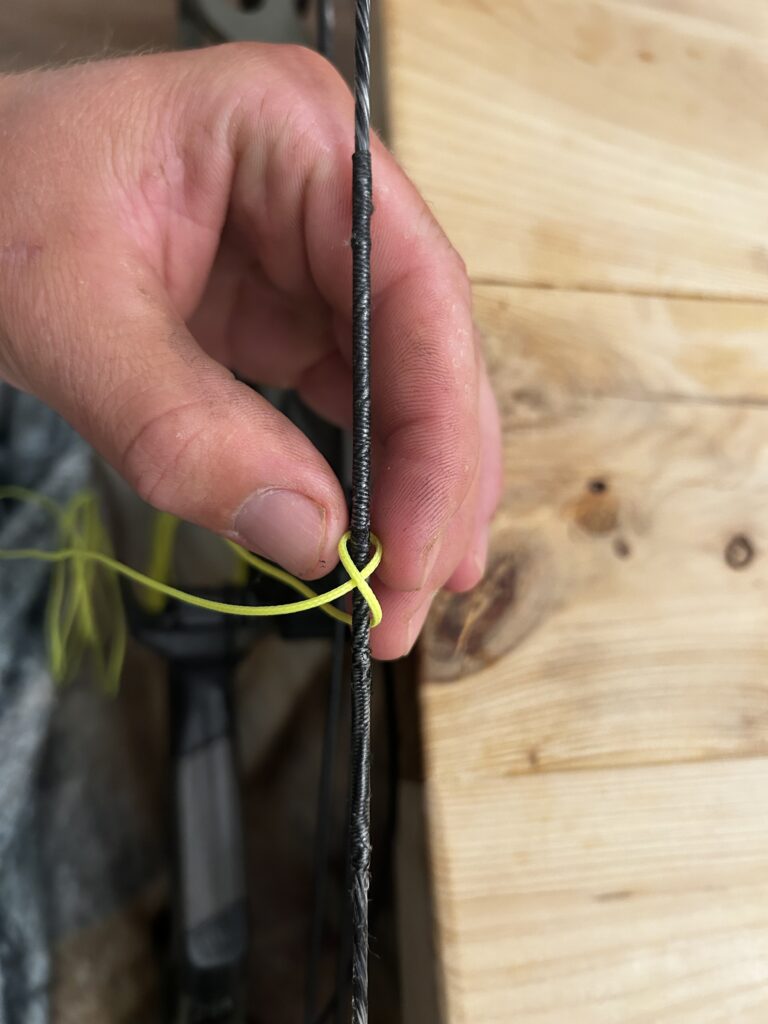
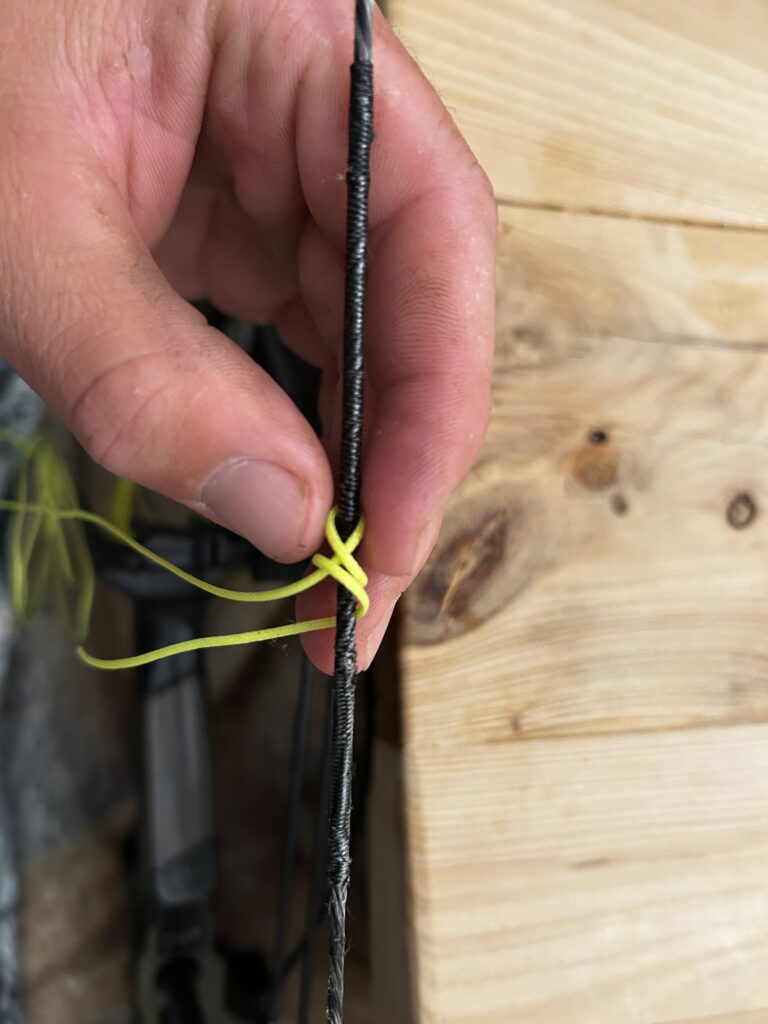
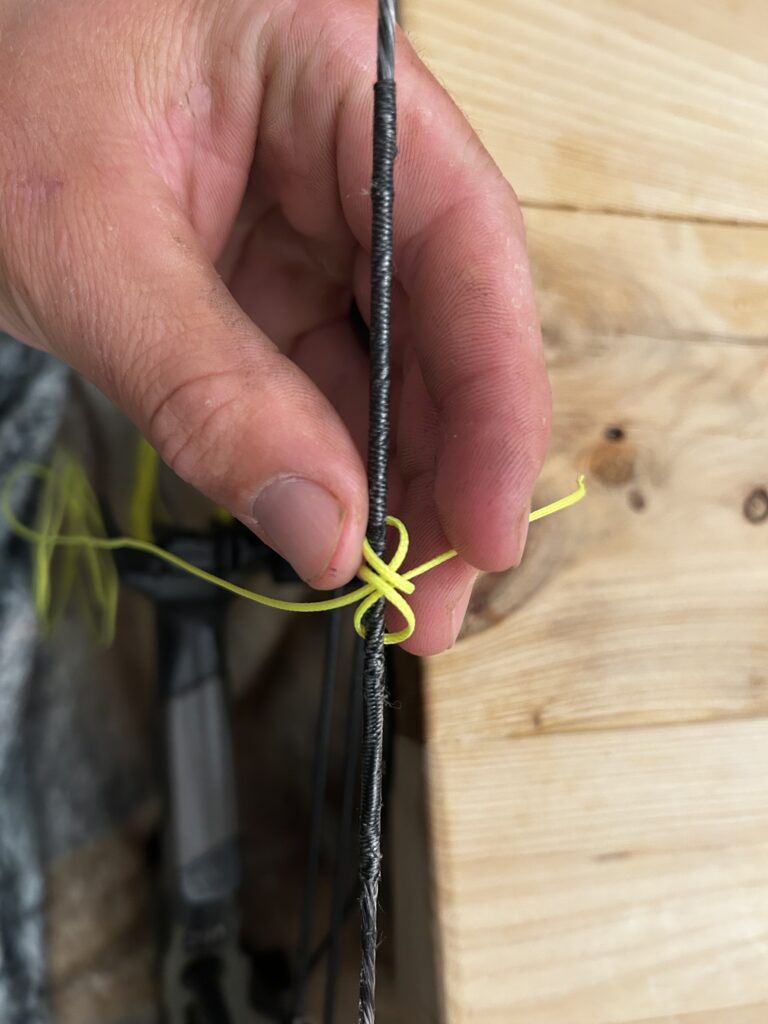
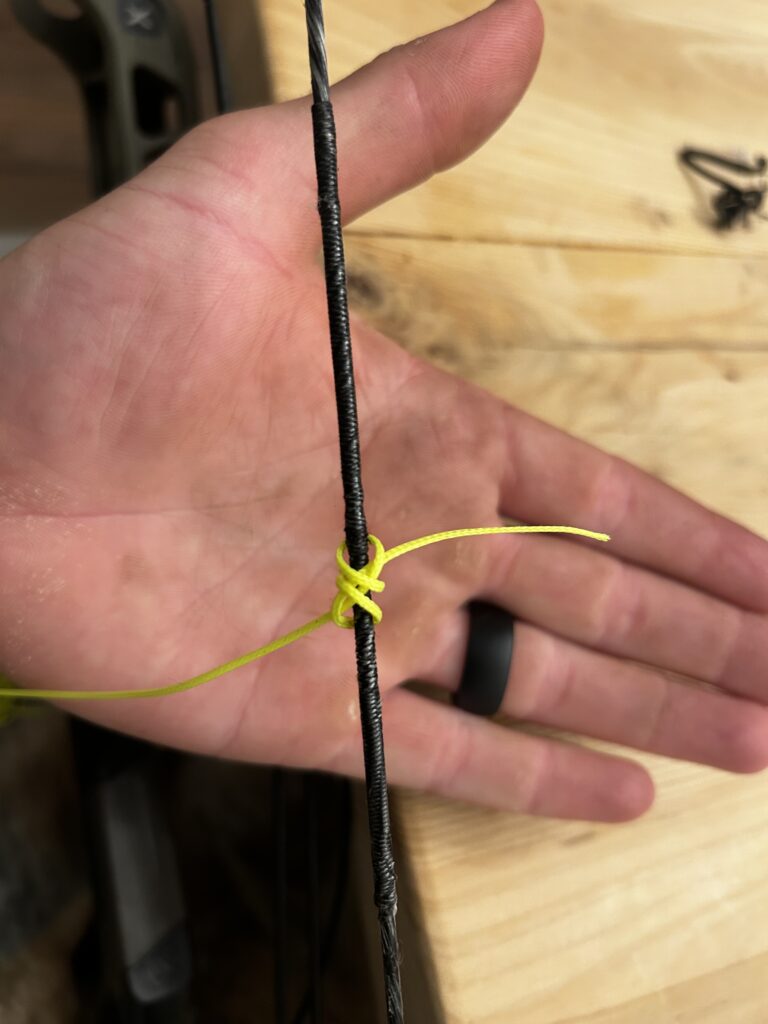
Step Three: Tie in the D-loop
Tying a d-loop is actually very easy. Anyone can look at a picture of a d-loop and figure out how it is tied. And everyone nowadays, except for some of the more crusty old bow techs, agrees that the knots should be facing different directions with the top knot’s tail facing away from the shooter on a right handed setup. Really the only differences in tie in methods are when you should cut the material. This is only really an issue if you want to use your d-loop to change your draw length. For an article on how to micro tune your draw length click here: https://archeryethos.com/how-to-find-and-micro-tune-your-draw-length-for-a-steadier-pin-float/ .
Which method is right for you
Some people will cut the d-loop material to a specific length, fray out the ends, melt them into a ball, and make the loop out of that. Others will fray and melt one end of the string, tie that side on, sinch it down, tie the other side, cut and melt the excess, and then stretch out the loop. There are multiple other methods, but they all accomplish the same thing. However, if you want your loop to be a certain length, you will most likely want to use the first method and record how long the material is after the ends have been melted, and then measure how long of a d-loop it produces. Keep in mind that it is not recommended to make a d-loop that is shorter than .5 inches or longer than 1 inch as a short d-loop can amplify hand torque and a long loop can potentially rotate around the string and hit the nock as it leaves the bow.
D-loop Material Choice
The material you use for your d-loop is a variable we should take into account. Most bow shops will use bcy24 loop material. However, a lot of high level shooters prefer the softer bcy23 material. The more malleable 23 is less susceptible to torque produced by the release hand. There is also no need to fray out the ends of bcy23; you can simply melt a cut end it will turn into a nice melted bulb. Just remember to leave at least a half inch of material for melting when you cut it. It is a pricier material, but I prefer the added forgiveness of the 23.
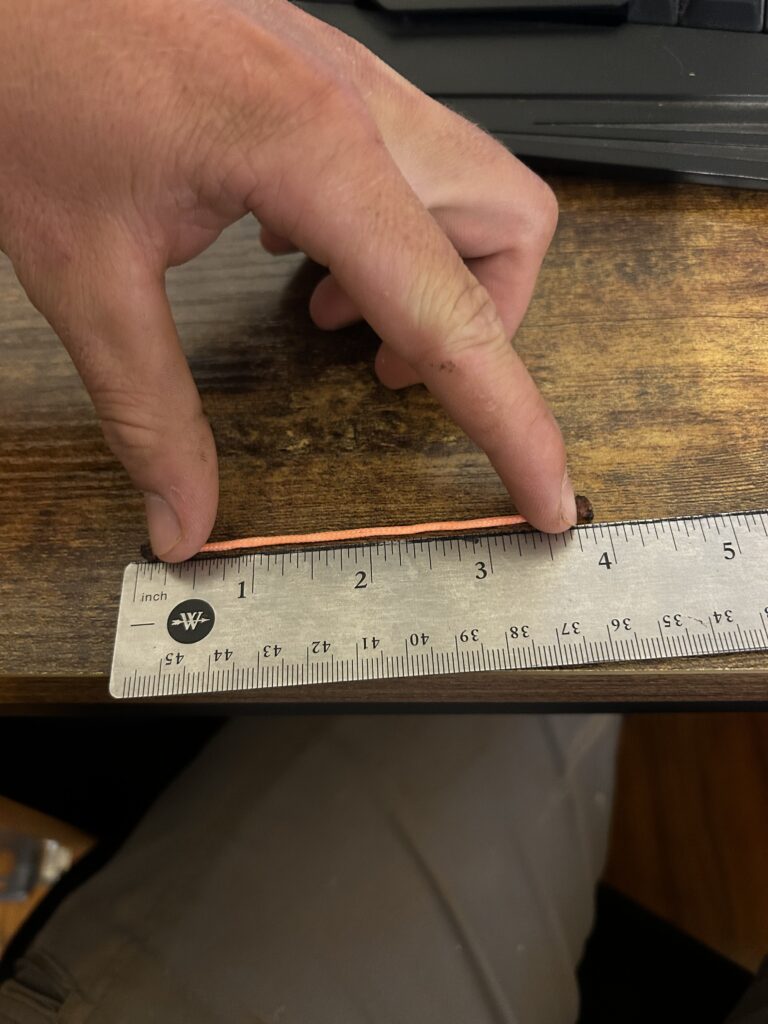
I prefer to measure and melt my material first. I’ve found that a 3and7/8inch piece produces a d-loop that is .603inches long with bcy23.

Tie the top of the d-loop on as shown with the bulb facing away and above the long side of the string. Leave a small gap between the nock and the d-loop knot. The nock should be able to move approx. 1 serving width between the loop and soft knot.
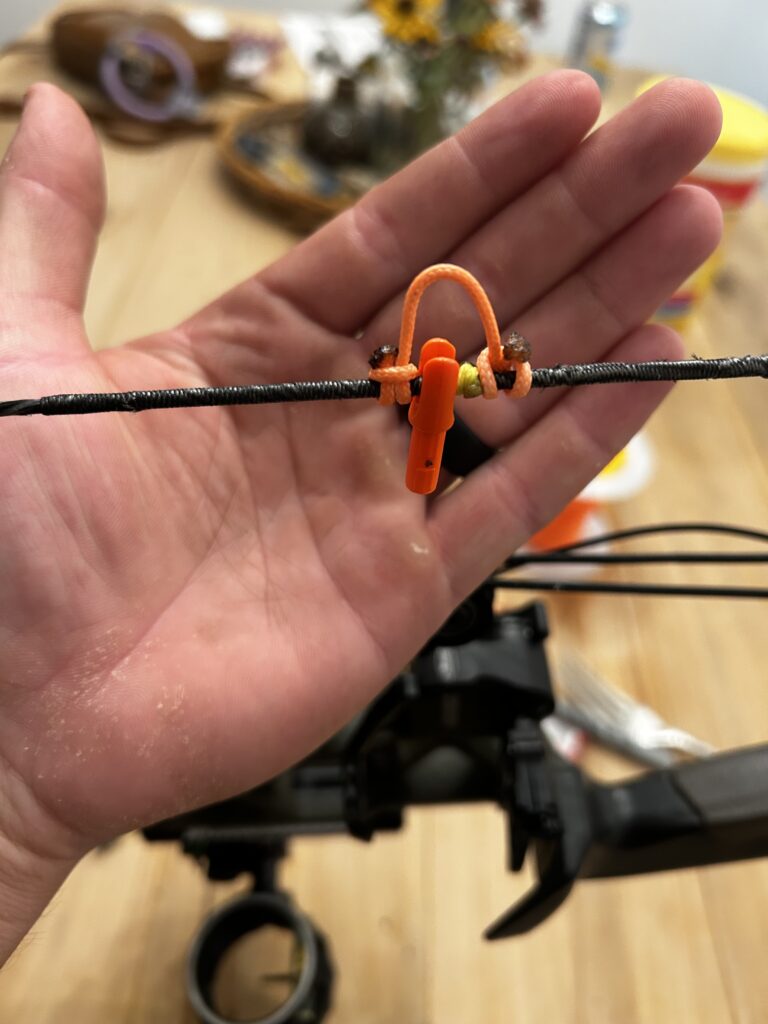
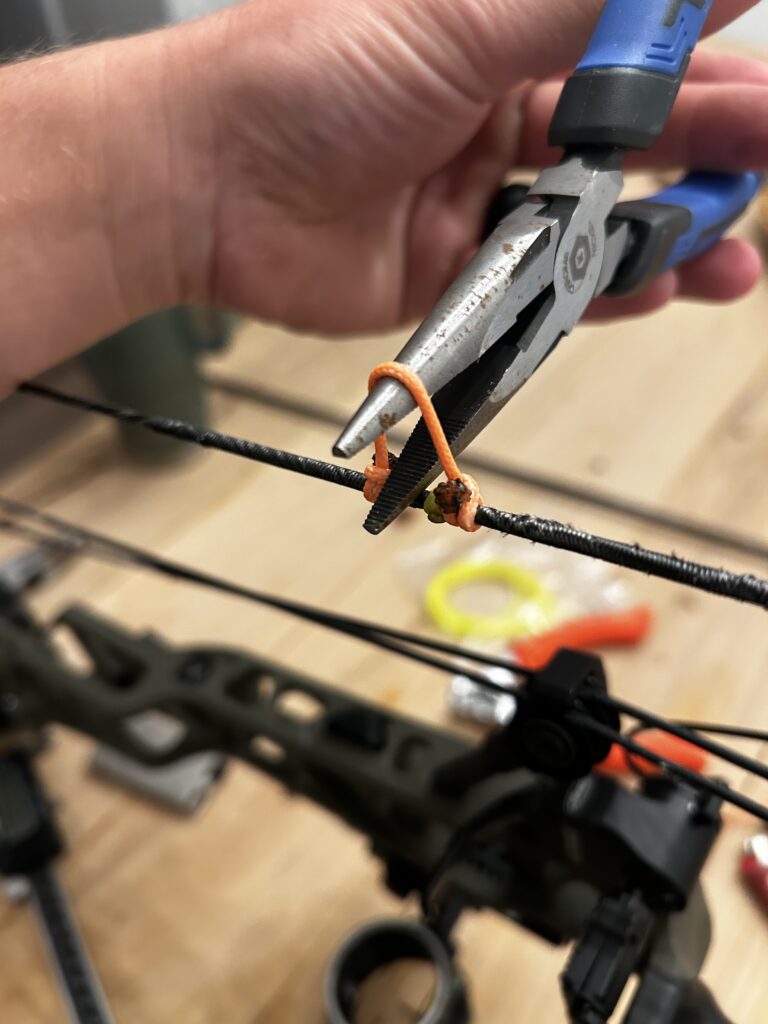
You can tighten the loop with needle nose pliers (take care to not let the pliers slip out when tightening)
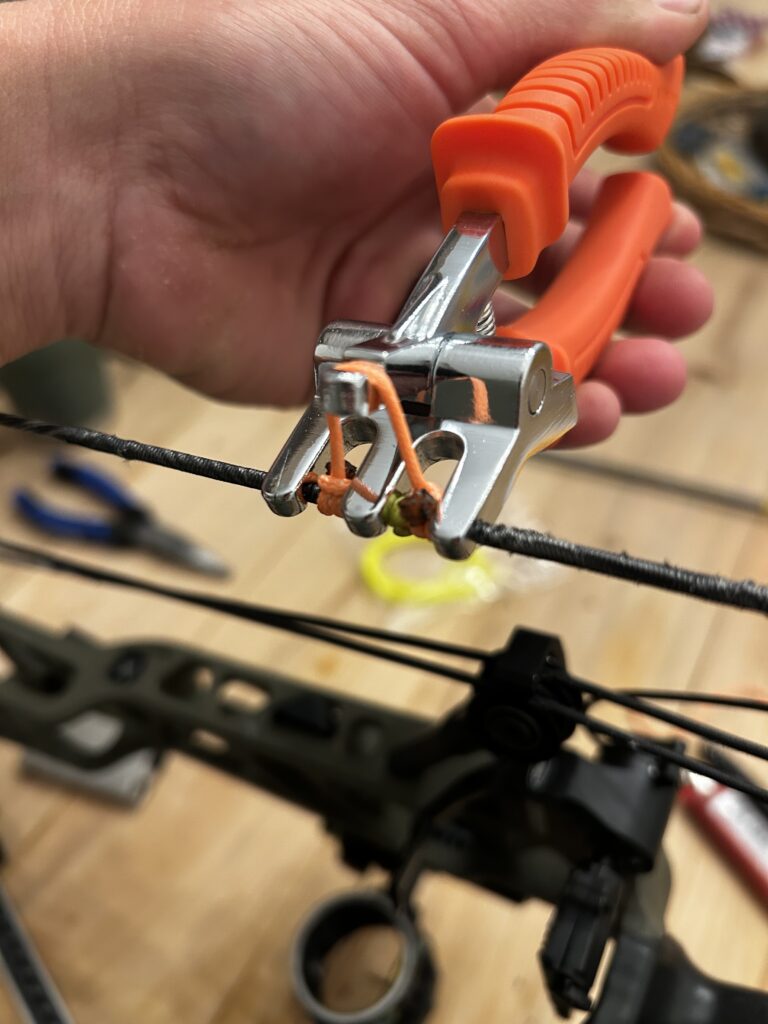
Loop pliers are the preferred way to tighten the loop (you don’t need to over-tighten the loop as it can cause the loop material to dig into and separate the serving material)
Tie the bottom as shown with the bulb facing you and the loop-side of the string higher than the melted bulb.
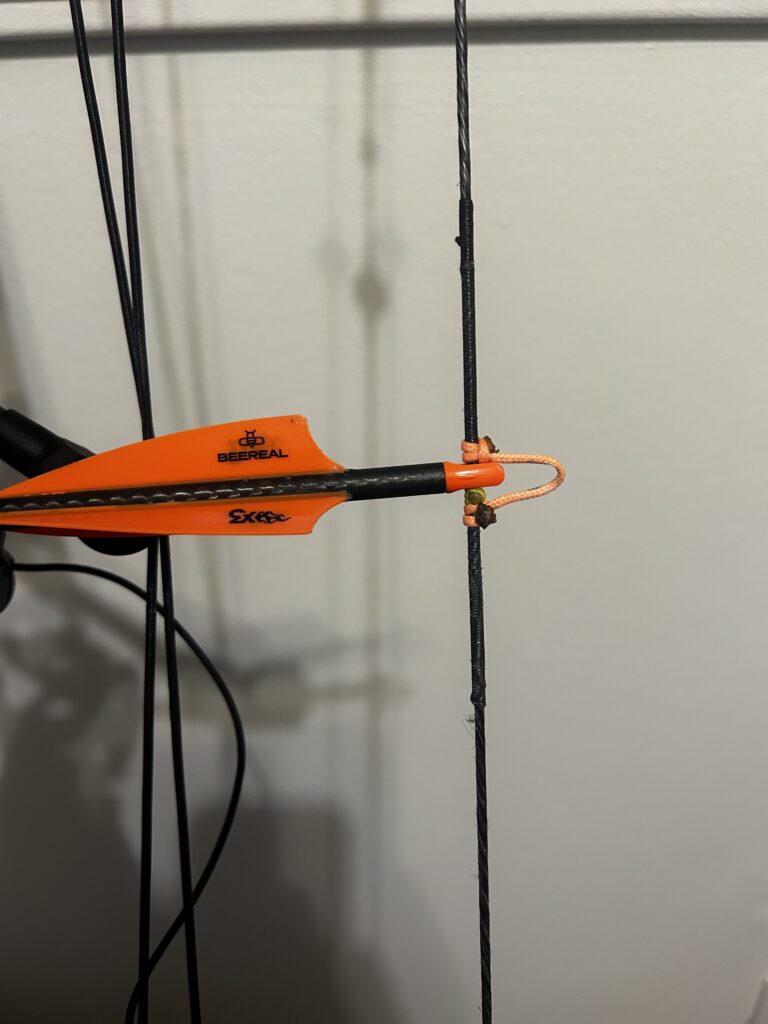
Viola! one beautiful and forgiving d-loop is finished
Summary
D-loops are actually very simple when you understand their function and what makes them efficient, accurate, and forgiving within the context of a bow and arrow setup. The d-loop alone will not make or break a bow setup, but it is one piece that will increase forgiveness. And when everything within your setup is optimized to create forgiveness, you will shoot much better and enjoy your time behind the bow far more. Hopefully you have learned a little something from this article that will benefit your archery experience. If you have any additional knowledge, insight, or comments regarding d-loop setup, please leave a comment in the comment section below.

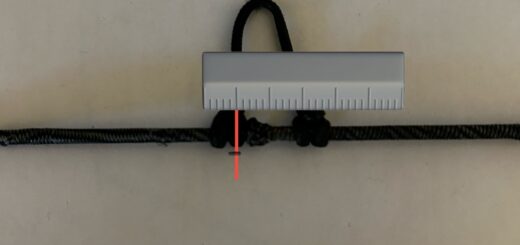

1 Response
[…] length neck. Or perhaps you try a longer or shorter d-loop length (Learn how to do this here: https://archeryethos.com/how-to-tie-a-d-loop-like-a-pro/ ). These methods can work well but they may have an effect that you don’t particularly care for. […]